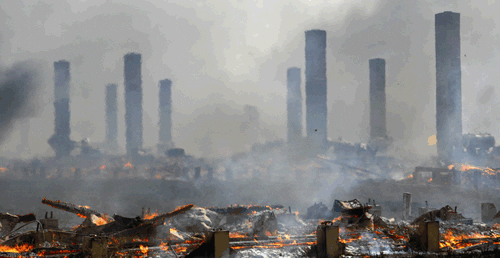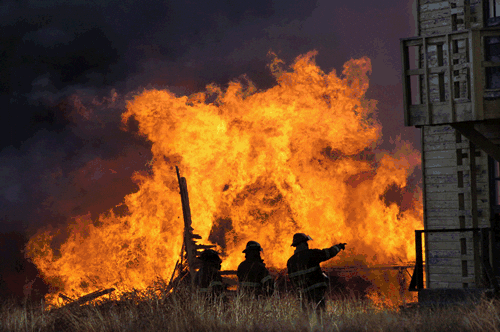By Dr. Curtis Varnell
The entire horizon to the south was glowing and I could hear dozens of sirens in the distance. The news spread quickly through the Lavaca neighborhood where I lived at the time; Fort Chaffee is on fire and burning down. By morning, the row upon row of barracks- the area we natives viewed as the Fort- were no more. Chimneys, looking like dozens of blackened fingers, were all that remained. Smoke rose from smoldering mounds of debris, remains of the vibrant camp that once stood at the edge of Fort Smith.
Fort Chaffee was established as a 70,000 acre military training base in 1941 and the first soldiers arrived there for training on December 7, 1941; the same day Pearl Harbor was bombed. It took only sixteen months to build the entire base. During the war, hundreds of soldiers received basic prior to being shipped to Europe or the Pacific to wage World War 11. It also served as a prisoner of war camp for more than 3,000 Germans captured during the war.
After the war, the Fort continued to function as a training area- primarily for artillery and tank training. During that time, potato hill near Charleston was a favorite practice target and many of us grew up trying to determine if the noise we heard was an approaching thunder storm or military maneuvers going on twenty miles away.
Probably the most memorable event that occurred at Fort Chaffee occurred in 1958 when young rock star Elvis Presley received his military haircut in building 803. Fort Chaffee has also served as the primary housing for refugees on three occasions. The first was in 1975 when the Vietnamese refugees arrived, the last when refugees from Hurricane Katrina arrived. The most controversial refugees were the more than 25,000Cuban refugees who arrived in 1980 and disrupted life in the region by rioting and blocking highway 22. A few of my neighbors offered to handle the problem for the government only to be refused. Eventually, troops had to be called in to quite the rebellion and Chaffee became close to a prison as the refugees were processed.
Less well known is the fact that Chaffee was a film site for Biloxi Blues, the Tuskegee Airmen, and A Soldier’s Story.
In 1995, the federal government decided to close Fort Chaffee except of military training and in 1997, the land was turned over to the Arkansas National Guard. Seven thousand acres was turned back to the local redevelopment authority- much of this area being the hundreds of buildings that once occupied the site. It is ironic that some of the new business and homes established in this process cost more than the one million three hundred fifty thousand dollars that the government paid the many people who were displaces when Chaffee was built.
Driving by the Fort today, one little recognized the life and stories it once held. The fire I witnessed, January 28, 2008, destroyed more than destroyed more than 150 buildings and 100 acres of land. Subsequent fires in 2011 and 2014 destroyed dozens more. Factories, a college, and row after row of housing stand where a Fort once existed.
No more manned gate houses, no more soldiers drilling, no more troops lounging outside every store in Barling and Fort Smith. The tremendous sounds I hear in the distance; I guess a thunderstorm is coming in from the west.











